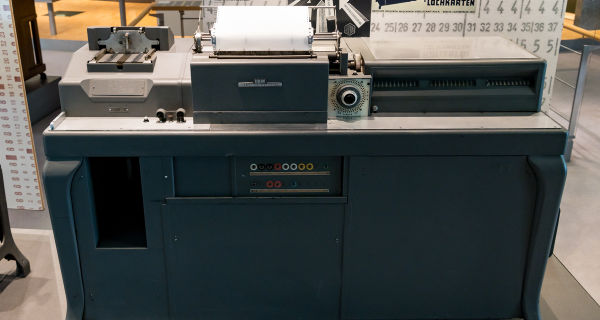The advent of punched card technology at the end of the 19th century brought about a radical change in administration and office work. Whereas this kind of work had previously been done manually in an arduous and time-consuming manner, punched card systems, invented by Herman Hollerith, enabled enormous amounts of data to be processed largely automatically and at speed. Punched card technology was only replaced gradually by electronic data processing from the 1960s.
First used in 1890
Punched cards were first used to store data in 1890 by the census authorities in the USA. Punched card systems first consisted of a punch, sorter and tabulator.
Owing to technical progress and additional machines such as reproducing punches, collators and sequence calculators, punched card systems also became interesting for non-governmental organizations such as insurance companies and large businesses. The focus was no longer on statistical surveys but on account transactions, payroll accounting, inventory management and billing. From the 1950s, punched card systems also found their way into medium-sized enterprises.
Women's work
Punched card technology gave rise to new jobs which differed greatly in the skills required. Card punching was a manual, labour-intensive activity. This activity remained the weak point in the processing of data on the basis of punched card technology. To keep the punch error rate as low as possible, employees verified the punched cards. No special qualifications were required for either of these jobs. They increasingly became the domain of women. To operate the machines, however, skilled personnel were needed. The most demanding activity was that of the tabulator who had to set the individual program runs. This job was reserved exclusively for men.
Machines from the major manufacturers of punched card equipment can be seen in the exhibition.
